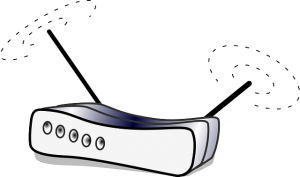A basic tutorial about IP addresses
 In this article we’ll discuss what IP addresses are, IPv4 versus IPv6, sub-netting, static versus dynamic IP addresses, the authorities that issue IP addresses and much much more.
In this article we’ll discuss what IP addresses are, IPv4 versus IPv6, sub-netting, static versus dynamic IP addresses, the authorities that issue IP addresses and much much more.
What is an Internet Protocol address (IP)?
An IP address is a specific number that’s assigned to each and every device that participates on a network that uses it for communicating. An IPv4 looks similar to 112.34.57.216 and an IPv6 looks similar to 2001:db8:0:1234:0:569:8:1. Think of them like post office addresses. The post office needs an address to know where to deliver your mail. The Internet needs an IP address to verify network identity and for location addressing.
IPv4 versus IPv6
IPv4 addresses are 32 bit numbers whereas IPv6 addresses use 128 bits, but why do we need both versions? And what ever happened to IPv5?
An IPv4 address is actually a dotted decimal notation for four 8 bit segments or 4 bytes, as 8 bits equals one byte. Each bit is notated as either a 1 or a 0, which in reality is a relative variance in voltage as computers don’t know a 1 from a 6 or a 0 from any other number.
Because an IPv4 address only has 32 bits, it limits the total possible address space to 4,294,967,296 unique addresses or approximately 4.3 billion addresses. Of those addresses, approximately eighteen million are reserved for private addresses and more or less 270 million addresses are reserved for multicast. Today’s private networks usually connect to the Internet via network address translation (NAT).
When you look at an IPv4 address, you’ll notice that it’s divided into four sections. Each of those sections consists of four decimal numbers ranging from 0 to 255.
IPv4 address have been exhausted because supply could not keep pace with demand
While Internet Service Providers still have a limited supply of IPv4 addresses still available, IANA’s primary address pool became depleted over 5 years ago when it allocated the last 5 blocks to the 5 RIRs.
IPv5?
Is it only possible to use even numbers in IP addresses? No, the reason IPv5 was never implemented was because it was assigned to an experimental Internet Stream Protocol which was initially known as ST.
This version was developed to facilitate voice streams and data by a number of vendors including Apple. How? By transferring data packets on specific frequencies while maintaining communication.
It was essentially the foundation for the development of technologies like Voice over IP (VoIP) which is used for voice communications over the Internet.
 IPv6
IPv6
IPv6 addresses consist of 128 bits versus IPv4 which has 32. IPv6 addresses are classified according to applications for addressing and routing; specifically unicast, multicast, and anycast networking. This protocol has actually been in development for over twenty years (early 1990s). IPv6 allows for a whole lot more address space than IPv4. While 4.3 billion addresses sound like a lot, IPv6 allows for roughly 340 trillion trillion trillion addresses, which is approximately forty-eight billion trillion trillion addresses for every man, woman and child on the planet.
And while this seems virtually inexhaustible, there are compatibility issues between the two protocols.
Sub-netting
At the onset of the Internet, an IP address was interpreted very differently than it is today. It was originally broken down into two sections which were the number and the host number portions. As additional networks were created independent of those already in existence, this interpretation became inadequate, thus giving rise to the classful network architecture. When someone talks about a Class C, they’re actually referring to this type of architecture. Over time though, faced with the rapid expansion of the Internet, this lacked scalability and was replaced with Classless Inter-Domain Routing (CIDR).
With IPv6 however, there is no need to use complicated/complex address methods like those used in CIDR. In fact, a large number of today’s desktops and enterprise servers include native IPv6 support. Even so, you can still find devices that have yet to incorporate IPv6, mainly in network peripherals, VoIP and multimedia equipment, and residential routers.
Subnet Masks
IPv4 subnet masks would look something like 192.0.24.1 and 255.255.255.0 where the CIDR notation would look like 192.0.24.1/24, meaning the first 24 bits would indicate both the network and its subnet.
 Static versus Dynamic IP Addresses
Static versus Dynamic IP Addresses
A static IP address is an address that remains the same and a dynamic IP address gets assigned each time you log in. Static IP addresses are generally assigned by an admin according to the rules for the platform on which the device is hosted. Dynamic IP addresses, on the other hand, are normally assigned by a server utilizing DHCP (Dynamic Host Configuration Protocol).
Static IP addresses reveal such information as the continent, country, region, and city in which a computer is located; the ISP (Internet Service Provider) that services that particular computer; and such technical information as the precise latitude and longitude of the country, as well as the locale, of the computer
Dynamic IP addresses may remain the same for extended periods of time, but they can change and generally do. If you’re on a residential dial up connection, you may be using a point-to-point protocol.
DNS
Essentially, the Domain Name System, also known as DNS, translates domain names like www.ProlimeHost.com to IP addresses. When you type a domain name into your Internet browser, that address is obtained from a DNS server. Should two device claim to have the same address, that would create a conflict, crippling both devices.
 Why do many shared web hosting clients have the same IP address?
Why do many shared web hosting clients have the same IP address?
www.thisdomain.com and www.thatdomain.com may have the same IP address if they’re part of a shared web hosting environment. The same can occur if an IPv4 NAT or proxy server acts as an intermediary agent. It’s very common for NAT (network address translation) to hide large numbers of IP addresses in a private network.
NAT essentially maps TCP or UDP port numbers from the public to individual private addresses. In a home network typically composed of a few computers, NAT functions usually occur in a residential gateway router. In this scenario, your laptop and other devices on your local network could share the same IP address.
BROUGHT TO YOU BY PROLIMEHOST
We’ve been in the web hosting industry for over a decade, helping hundreds of clients succeed in what they do best and that’s running their business. We specialize in Virtual Private Servers (VPS) and dedicated servers, with data centers in Los Angeles, Denver & Singapore.
VPS SERVICES: LIGHTNING FAST SSD VIRTUAL SERVERS
Our Virtual Private Servers all feature high performance Xeon processors and SSD storage in a RAID10 configuration to optimize your server’s performance, which dramatically enhances visitor experiences on your site.
That speed is backed by unparalleled 24/7 support, featuring both outstanding response AND resolution times to maximize your uptime.
Now is the time to join the ProlimeHost virtual private server revolution.
DEDICATED SERVERS: BACKED BY A 99.9% SLA NETWORK UPTIME GUARANTEE
We only use enterprise-class hardware in our dedicated servers and offer a four (4) hour hardware replacement. Throw in IPMI for remote management, support for public and private networks, free operating system (OS) re-installs, and SATA, SAS & SSD (including NVMe) storage. Call 1-877-477-9454 or contact us. For everything from gaming servers to cheap dedicated servers, we’re here to help.
ASIA OPTIMIZED SERVERS: IMPROVING CONNECTION SPEED AND QUALITY
Procuring an Asia optimized server improves the connection speed and quality between the server and the users in Asia or China. This can reduce latency, packet loss, jitter, and bandwidth issues that can affect the performance and reliability of the server and the applications hosted on it. For more information, please call 1-877-477-9454 or contact us.
- Resource limitations on shared hosting? - April 18, 2024
- Addressing TOS Policies for Web Hosting Providers - April 17, 2024
- Dedicated servers versus cloud computing - April 16, 2024




